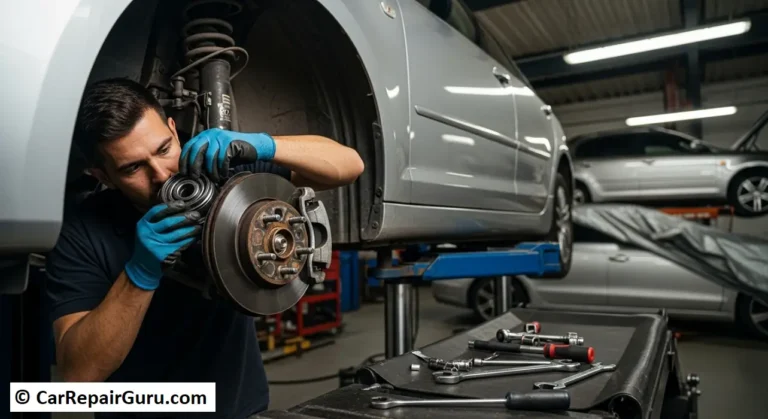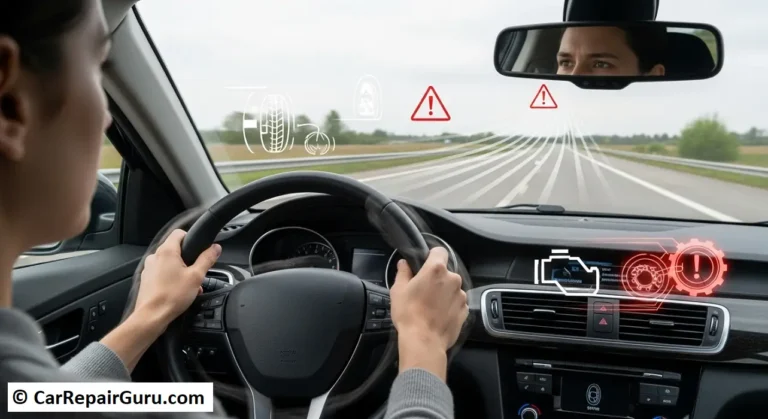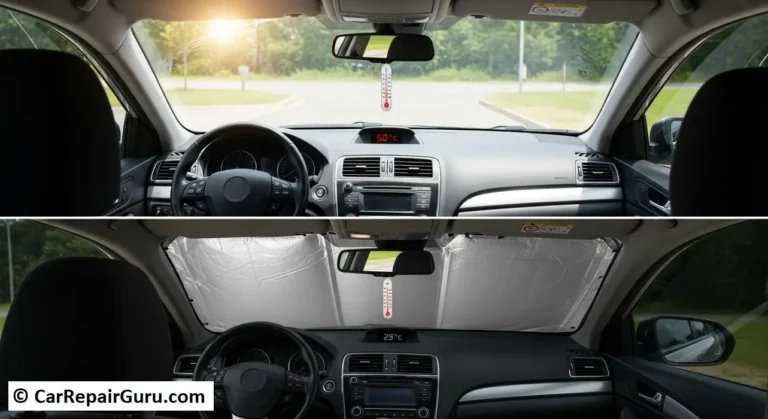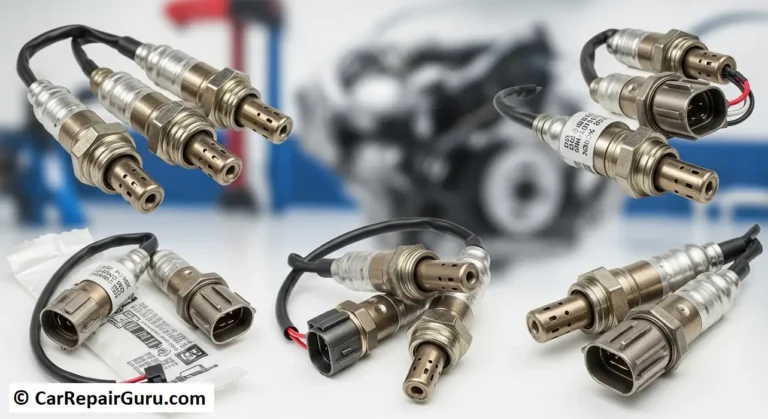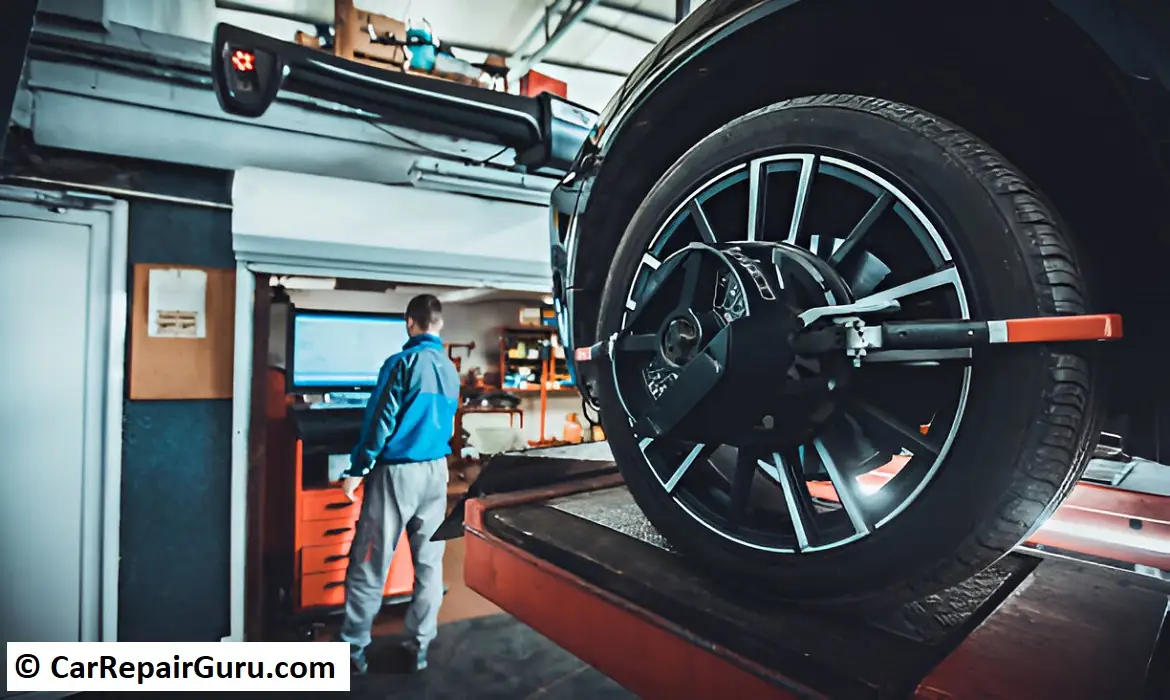
Driving safely isn’t just about following traffic rules—it’s also about maintaining your vehicle in top condition. One often-overlooked aspect of car care is wheel alignment. Proper alignment ensures that your tires meet the road at the correct angles, enhancing vehicle stability, improving steering control, and extending tire life.
Misaligned wheels can lead to uneven tire wear, poor fuel efficiency, and even safety risks, such as reduced braking performance. Whether caused by hitting a pothole, curbs, or simply wear and tear, alignment issues can sneak up on drivers and result in costly repairs if ignored.
This article dives into everything you need to know about car alignment checks. You’ll learn to spot the warning signs of misalignment, the benefits of regular checks, and practical tips to maintain proper alignment. Ensuring your car’s wheels are perfectly aligned isn’t just about performance; it’s about safety, savings, and peace of mind.
What Is Car Alignment?
Car alignment, often referred to as wheel alignment, is the process of adjusting the angles of your car’s wheels to ensure they meet the road surface correctly. This adjustment is essential for maintaining vehicle handling, optimizing tire health, and ensuring a safe, smooth ride. Proper alignment reduces uneven tire wear, enhances fuel efficiency, and improves overall vehicle stability, especially at higher speeds or during cornering.
The alignment process revolves around three key angles: caster, camber, and toe:
- Caster: This angle measures the tilt of the steering axis from the side view. A positive caster improves stability at higher speeds, while a negative caster might cause unstable handling.
- Camber: This refers to the inward or outward tilt of the wheels when viewed from the front. Proper camber ensures even tire wear and maximizes contact with the road.
- Toe: This is the angle of the wheels turning inward (toe-in) or outward (toe-out) when viewed from above. Incorrect toe settings can cause rapid tire wear and affect steering response.
Alignment issues often occur due to potholes, curb impacts, or natural wear over time. Regular alignment checks are vital for preserving your vehicle’s performance and safety. Whether during routine maintenance or after noticing signs like uneven tire wear or pulling to one side, ensuring proper alignment protects both your car and your wallet.
Signs Your Car Needs an Alignment

Recognizing the signs of poor car alignment early can save you money on repairs and improve your driving safety. Here are the most common symptoms indicating your car may need an alignment check:
1. Pulling to One Side While Driving
If your car drifts to the left or right when driving on a straight, flat road, it’s a strong indicator of alignment issues. Even a slight pull can be a sign that the wheels aren’t aligned properly, forcing you to constantly correct your steering.
2. Uneven Tire Wear
Misaligned wheels can cause uneven tread wear, with some areas of the tire wearing down faster than others. Check your tires regularly for noticeable differences in tread depth—this could be an alignment problem in need of attention.
3. Vibrations in the Steering Wheel
A shaking or vibrating steering wheel, especially at higher speeds, often indicates misaligned wheels. The uneven angles of the tires can cause this vibration as they struggle to maintain consistent contact with the road.
4. Off-Center Steering Wheel
If your steering wheel is not centered while driving straight, or it feels stiff or loose, it may be due to misalignment. A properly aligned car should have a level steering wheel aligned with your direction of travel.
5. Squealing Noises During Turns
Hearing high-pitched squealing when turning corners? This could result from uneven tire angles struggling to grip the road effectively.
Tips for Early Detection
- Conduct a visual inspection of your tires for uneven wear patterns.
- Test your car’s pull by briefly loosening your grip on the steering wheel on a straight road (if safe to do so).
- Pay attention to any unusual sounds or vibrations, especially after hitting potholes or curbs.
Addressing these issues promptly with a professional alignment service can restore proper handling, enhance safety, and extend the life of your tires.
Why Regular Alignment Checks Matter
Regular alignment checks are more than just a routine car service—they’re an essential part of maintaining your vehicle’s health, performance, and safety. Here’s why staying on top of your car’s alignment is so important:
1. Prolongs Tire Life
Proper alignment ensures even tire wear, which significantly extends the lifespan of your tires. Misaligned wheels cause uneven tread wear, leading to frequent tire replacements and unnecessary expenses. By keeping your alignment in check, you’ll save money and reduce waste.
2. Improves Fuel Efficiency
When your wheels are misaligned, your engine has to work harder to propel your car forward due to increased rolling resistance. This extra strain results in lower fuel efficiency. Regular alignment checks optimize your vehicle’s fuel consumption, saving you money at the pump while reducing your environmental footprint.
3. Enhances Driving Safety
Misalignment affects your car’s stability, steering, and braking performance. Issues like pulling to one side or vibrations in the steering wheel can compromise your ability to control the vehicle, especially in emergencies. Regular checks ensure your car remains safe to drive, giving you peace of mind on the road.
4. Reduces Stress on Suspension Components
Misaligned wheels can put undue stress on your car’s suspension system, causing premature wear on parts like shocks, struts, and ball joints. By addressing alignment issues early, you’ll protect these critical components and avoid costly repairs.
Routine alignment checks, particularly after hitting potholes or curbs, are a small investment that pays off in the form of better performance, longer-lasting tires, and safer driving. Schedule your next alignment check and keep your car in optimal condition.
How Technicians Perform an Alignment Check
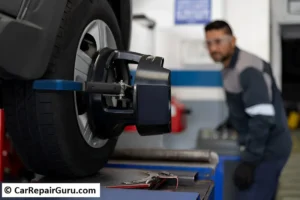
Professional alignment checks are performed using advanced diagnostic tools and precise methodologies to ensure optimal vehicle performance and safety. Here’s an overview of how technicians perform this essential service:
Diagnostic Tools: The Four-Wheel Alignment System
Modern alignment checks rely on computerized systems like the four-wheel alignment system. These tools use sensors and cameras to measure wheel angles with incredible accuracy. Technicians compare these measurements against manufacturer specifications to identify any misalignments in caster, camber, or toe angles.
Steps Involved in the Alignment Process
- Inspection: Technicians begin by inspecting the suspension system, steering components, and tires. They look for signs of wear or damage that could affect alignment, such as worn ball joints, tie rods, or uneven tire tread.
- Testing: Using the alignment system, they test the current alignment by analyzing the angles of all four wheels. This step provides a detailed report, highlighting deviations from the recommended settings.
- Adjustments: Based on the results, technicians make precise adjustments to the suspension system to correct any misalignment. This might involve altering the tie rods, adjusting camber bolts, or other fine-tuning processes to bring the angles back within manufacturer specifications.
The Importance of Professional Checks
While DIY alignment checks might sound appealing, achieving the necessary precision without professional tools is nearly impossible. Misalignment issues can go unnoticed until they cause significant problems, such as uneven tire wear or compromised handling. Professional technicians ensure that your alignment is corrected accurately, enhancing safety, improving fuel efficiency, and prolonging your car’s lifespan.
By scheduling regular professional alignment checks, you’ll ensure your vehicle remains in top condition and avoid costly repairs down the road.
DIY Tips for Monitoring Alignment at Home
While professional alignment checks are essential, you can monitor your car’s alignment at home to catch early signs of trouble. Here are some simple DIY methods:
1. Visual Inspection for Uneven Tire Wear
Start by examining your tires closely. Uneven wear patterns, such as excessive wear on one side of the tire or cupping, may indicate misalignment. Use a tread depth gauge or visually compare the tread on all four tires. Consistent tread wear suggests proper alignment, while noticeable differences could signal issues requiring professional attention.
2. Driving Tests on Flat Surfaces
Find a flat, straight road to test your car’s alignment:
- Step 1: Gently release your grip on the steering wheel (while keeping it within reach for safety) and observe if the car pulls to one side. If it does, this could indicate misalignment.
- Step 2: Pay attention to your steering wheel position when driving straight. An off-center steering wheel is another common sign of alignment issues.
Always perform this test in a safe, low-traffic area to avoid risks.
3. Checking Tire Pressure
Improper tire pressure can mimic alignment issues, such as pulling to one side or uneven wear. Before assuming alignment problems, use a tire pressure gauge to check that all tires meet the manufacturer’s recommended PSI levels. Adjust the pressure if necessary and recheck for any symptoms.
Additional Tips
- After hitting a pothole or curb, inspect your tires and observe any changes in handling.
- Keep a log of tire rotations and alignments to track maintenance history.
- Consider investing in a simple alignment gauge for more precise at-home measurements.
While these DIY methods can help you monitor alignment, they’re not substitutes for professional checks. Regular professional alignments remain essential to ensure your car’s safety, performance, and longevity.
When to Schedule a Professional Alignment Check
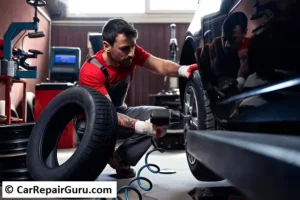
Scheduling regular alignment checks is vital for maintaining your car’s performance, tire life, and safety. Here are the key times to consider a professional alignment service:
1. Annual Checks or When Replacing Tires
Experts recommend having your alignment checked at least once a year, even if you don’t notice any symptoms. This preventive step ensures your wheels remain properly aligned over time. Additionally, getting a professional alignment is essential when installing new tires to prevent uneven wear and extend their lifespan.
2. After Hitting Curbs or Potholes
A sudden impact, such as hitting a curb, pothole, or speed bump at high speed, can knock your wheels out of alignment. If you notice pulling, vibrations, or an off-center steering wheel afterward, schedule an alignment check immediately to avoid further damage to your tires or suspension.
3. Before Long Trips
Before embarking on a long journey, ensure your car is in optimal condition, including wheel alignment. Proper alignment enhances fuel efficiency, improves handling, and reduces the risk of tire-related issues during the trip.
Additional Considerations
- Regular alignment checks are also crucial for vehicles that frequently carry heavy loads, as added weight can stress the suspension system and affect alignment.
- If you notice any signs of misalignment, such as uneven tire wear or squealing noises, don’t wait—schedule a professional check promptly.
By timing your alignment checks strategically, you’ll enjoy safer, smoother rides and save money on repairs and replacements in the long run.
Cost and Time for Car Alignment Services
Typical Cost Ranges
Car alignment services generally cost between $75 and $100 for a standard two-wheel alignment and $100 to $150 for a four-wheel alignment. Prices may vary based on the vehicle type, location, and service provider. Luxury or performance vehicles may incur higher costs due to specialized equipment and expertise required.
Time Required
Most alignment checks and adjustments take about 1 to 2 hours. However, additional time may be needed if significant repairs are required for components like tie rods or suspension parts.
Why Regular Checks Are Cost-Effective
While alignment services involve an upfront cost, they are a smart investment. Proper alignment:
- Extends tire life, reducing the need for frequent replacements.
- Improves fuel efficiency, saving money at the pump.
- Prevents damage to suspension and steering components, avoiding costly repairs.
Skipping alignment checks can lead to uneven tire wear, reduced handling, and potential safety hazards, ultimately costing far more in repairs and replacements. Regular alignment checks ensure your vehicle runs efficiently and safely, making them a cost-effective part of your maintenance routine.
Conclusion
Regular alignment checks are essential for maintaining your car’s safety, performance, and efficiency. Proper alignment not only ensures smoother handling and improved driving safety but also extends the life of your tires, enhances fuel efficiency, and minimizes wear on critical suspension components. Neglecting alignment can lead to uneven tire wear, poor vehicle handling, and costly repairs down the road.
By monitoring alignment symptoms at home and scheduling timely professional checks—especially after incidents like hitting a curb or before long trips—you can proactively address potential issues. Investing in routine alignments is a cost-effective strategy that saves you money in the long term while keeping your car in optimal condition.
Don’t wait until misalignment becomes a bigger problem. Schedule your next alignment check today and experience the benefits of a safer, more efficient ride. Your vehicle—and your wallet—will thank you.
FAQs About Car Alignment
What Is Car Alignment?
Car alignment refers to the adjustment of a vehicle’s suspension—the system connecting the car to its wheels. Proper alignment ensures that the wheels are positioned correctly relative to the road, improving handling, tire longevity, and overall performance.
How Do I Know My Car Needs an Alignment?
If your car pulls to one side, has uneven tire wear, a vibrating steering wheel, or makes squealing noises when turning, it likely needs an alignment. A professional check can help prevent further issues.
How Often Should I Get a Wheel Alignment?
Most experts recommend an alignment check every 12,000 miles or once a year. You should also schedule one after hitting a curb or pothole, when installing new tires, or before a long road trip.
Can I Perform an Alignment at Home?
While you can monitor alignment symptoms with DIY checks, such as visual tire inspections or driving tests, the actual alignment process requires specialized tools and expertise. It’s best left to professionals.
Does Wheel Alignment Impact Fuel Efficiency?
Yes, misaligned wheels increase rolling resistance, forcing your car to use more fuel. Proper alignment ensures optimal efficiency, saving you money over time.
Is Wheel Alignment the Same as Balancing?
No, alignment adjusts wheel angles, while balancing corrects uneven weight distribution in the wheels to eliminate vibrations. Both are important for tire health.
